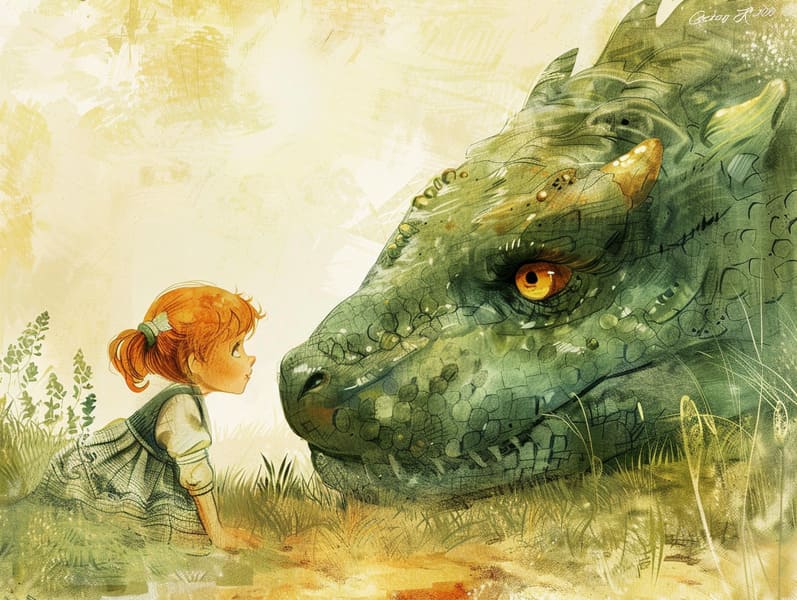Exploring the Roots of Historical Fairy Tales with Its Enduring Beauty.
Exploring the Roots of Historical Fairy Tales with Its Enduring Beauty.
Blog Article

Historical fairy tales have deep roots. These narratives have been told from one generation to the next millennia before they were ever put on paper. They arose from a variety of backgrounds, including Western traditions. They were initially conveyed among mature audiences, often carrying themes and messages mirroring the societal norms and beliefs of the time.
The renowned Brothers Grimm, Jacob and Wilhelm (the Grimm brothers), were among the first to assemble many of these beloved narratives. Their collection, "Grimm's Folk Tales," included stories like "Cinderella," "Hansel and Gretel," and "Snow-White and Rose-Red," which have since become cornerstones in the world of children's fairy tales. Similarly, H. C. Andersen's whimsical narratives, such as "The Story of the Little Mermaid," and "The Ugly Duckling," have enchanted hearts worldwide, guaranteeing their place in the pantheon of iconic fairy tales.
Though they are old, classic fairy tales remain as relevant as ever, especially as kids' bedtime tales. These enchanting tales are now available in diverse formats, including artistically illustrated books, fantastical animations, and online storybooks.
Their ongoing significance can be linked to several magical reasons:
Important Morals: Timeless fairy tales often impart important moral lessons. Fairy tales like "The Shepherd Boy and the Wolf" teach the benefit of truthfulness, while "The Tortoise and the Hare" highlight the qualities of tenacity and humility. These narratives offer the young clear distinctions between moral and immoral, molding their moral compass in a tender yet deep way.
Empathy and Understanding: Ancient fairy tales frequently illustrate beings facing trials and tribulations, urging readers to resonate with their struggles and support their triumphs. For instance, "The Tale of Beauty and the Beast" demonstrates the benefit of looking past the exterior to comprehend the true nature of a person, promoting kindness and awareness.
Cultural Appreciation: Many fairy tales are imbued with the cultural contexts from which they came. Exploring these narratives can provide illuminating insights into different societies, fostering a sense of cultural insight and knowledge.
Inventiveness and Fantasy: The fantastical elements in old fairy tales—magical spells—trigger children’s creative minds. These stories move readers to fantasy realms, firing up fantasy dreams and a sense of mystery that endures a lifetime.
Ancient fairy tales are not only enchanting but also enlightening. They function as delightful tools in nurturing various mind and heart abilities in the young. When old fairy tales are voiced, they enhance language acquisition by showing new terms and intricate sentence structures. This practice also advances auditory skills and focus, as young readers listen intently, eager to see what happens next.
Furthermore, analyzing the themes and characters of timeless fairy tales can promote thought processes and analytical skills. Young readers are educated to spot patterns, predict happenings, and comprehend cause and effect. These examinations also further kids articulate their thoughts and feelings, contributing to their emotional intelligence.
In today’s modern era, the presence of digital storybooks has made these fairy tales more within reach than ever. Web-based platforms and apps present vast collections of classic fairy tales that can be read or played anytime, anywhere. Fairy tales read out loud are particularly well-received, featuring an interactive way for little ones to delight in these mesmerizing stories. Read-aloud stories and read-out-loud videos move characters and settings to life, often paired with mesmerizing musical scores and harmonies that enhance the narrative experience.
The enduring charm of classic fairy tales lies in their ability to adapt to modern times while sustaining their fundamental ideas. Contemporary modernizations of these tales often showcase more diverse characters and modern settings, making them understandable to today’s audience. However, the basic principles of boldness, benevolence, and honesty remain read more unchanged, continuing to strike a chord with kids of all ages.
Ancient fairy tales also offer a sense of coziness and comprehensibility. They allow a methodical narrative with a unmistakable beginning, middle, and end, often ending with the ending of conflicts and the triumph of truth over falsehood. This constancy can be placating for young readers, rendering a sense of dependability in an unpredictable world.
Traditional fairy tales continue to allure and instruct new generations, maintaining their wonder and meaningfulness in modern society. As children's night stories, they highlight a perfect blend of delight and instruction, enhancing moral values, empathy, and creativity. The existence of web-based fairy tales and the well-liked nature of fairy tales read out loud make sure that these old narratives remain acquirable to new generations.
By retaining and releasing these narratives, we continue to extol the rich tapestry of creativity and cultural heritage. Whether you are discovering a beautifully illustrated book, experiencing a web-based library, or listening to an sound book, the magic of traditional fairy tales is always within reach. These narratives demonstrate of the persistent influence of narratives and its ability to bring us together across epochs and places.
No matter if you are seeing a richly illustrated book, seeing a web-based library, or hearing an spoken story, the enchantment of bedtime fairy tales is always within reach.
These fairy tales point out of the unwavering spell of narratives and its ability to unify us across time and space, making a tie that enchants and educates alike.